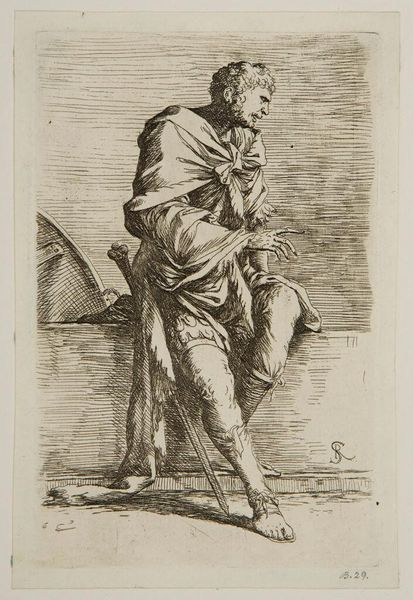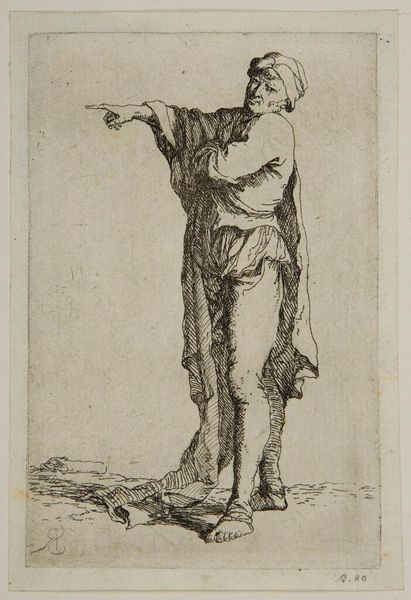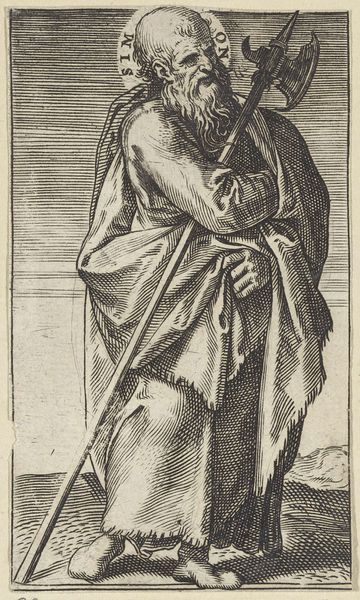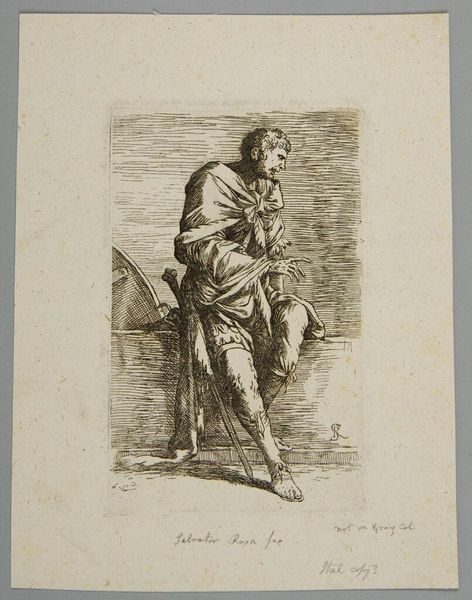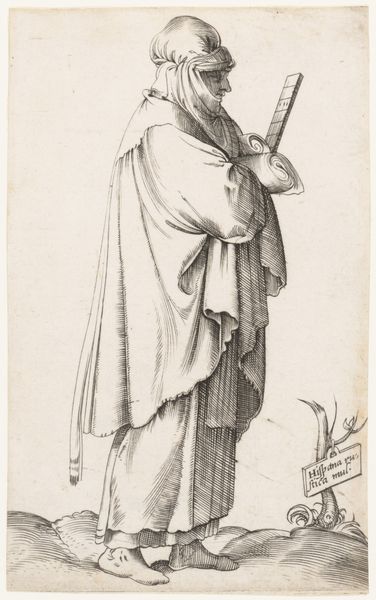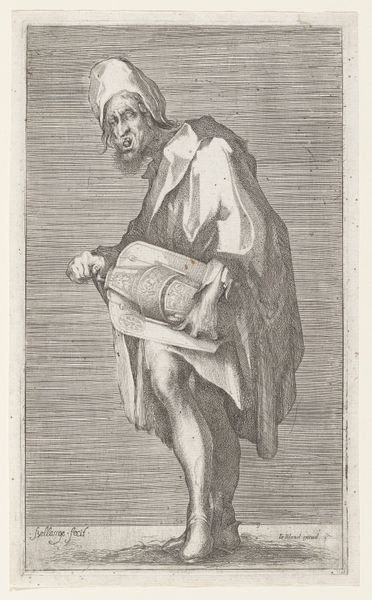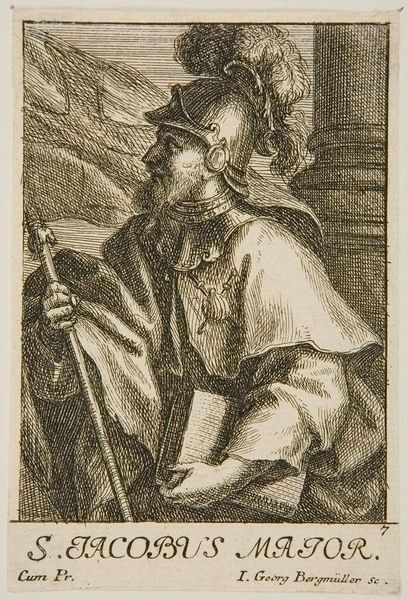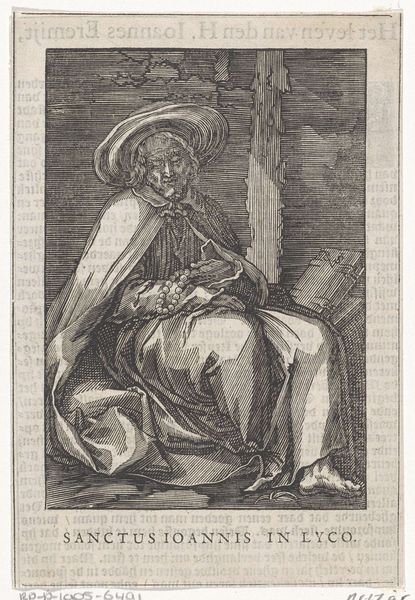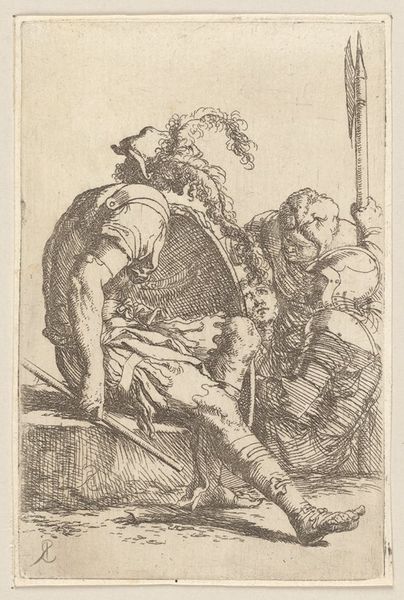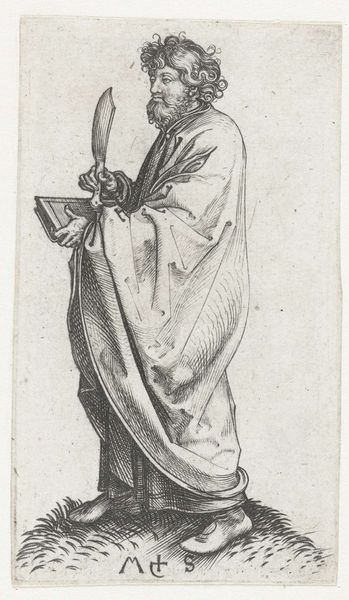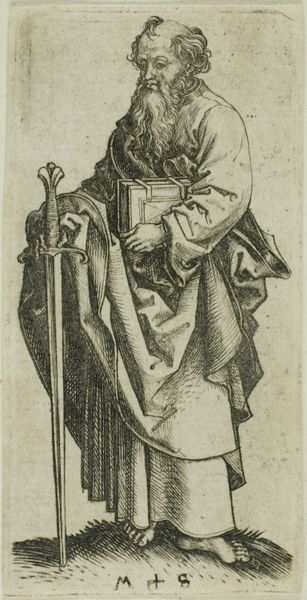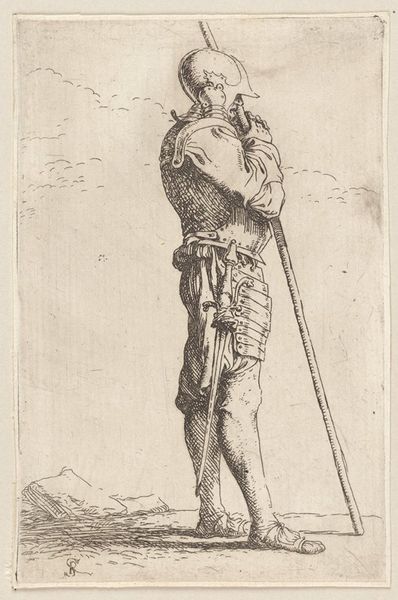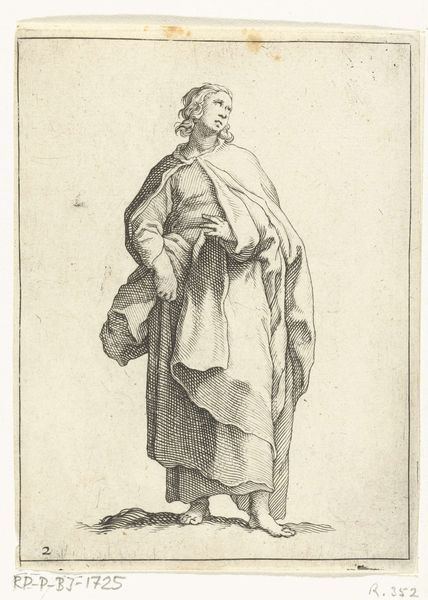
drawing, etching
#
portrait
#
drawing
#
baroque
#
etching
#
figuration
Copyright: Public Domain: Artvee
Curator: We're looking at "Soldier, Seated", an etching by Salvator Rosa, dating from around 1656-1657. Editor: He seems weary, burdened. The lines are stark, but they capture such a sense of resignation, don't you think? Like a soldier reflecting on campaigns long past. Curator: Absolutely. Rosa was interested in exploring the human cost of conflict, the realities beyond heroic narratives. Look at the figure’s attire. The sword leaning haphazardly, the worn and rather thin robe suggesting a figure perhaps in between military activity or possibly retired from action altogether. These choices ground the scene in a sense of everyday struggle. Editor: It's interesting to note that even in such a seemingly simple drawing, the etching manages to suggest a much grander story, a tapestry of historical context and emotional intensity, all within such stark lines. Curator: Exactly, the material conditions—the lines etched into the plate, the affordability of prints, allowed for wider circulation. Think about who could purchase these. They offer insight into Rosa's role as not only an artist, but an entrepreneur crafting pieces affordable to the rising middle class during times of socio-political upheaval in the Baroque Era. Editor: So it becomes about democratization, really. War made visible, even available, to the people through Rosa's unique craftsmanship, a way for the public to own a story like this. The technique, then, directly enhances and changes its audience. Curator: Precisely, transforming what was once reserved for an elite class, paintings hanging on a wall, to become a commodity distributed and available to more people. Editor: A commodity with an aching, soulful resonance to it! Even just seeing the barest hint of the shield, gives me such an aching weight and presence of loss. It feels utterly present to me now, seeing it differently, like an object I am handling. Curator: And there we arrive back to the essence of materials and processes informing a greater human understanding. Editor: Indeed. It really does shift how we receive this art when we understand all of these layers, material, accessible, historical. It enriches it profoundly.
Comments
No comments
Be the first to comment and join the conversation on the ultimate creative platform.

